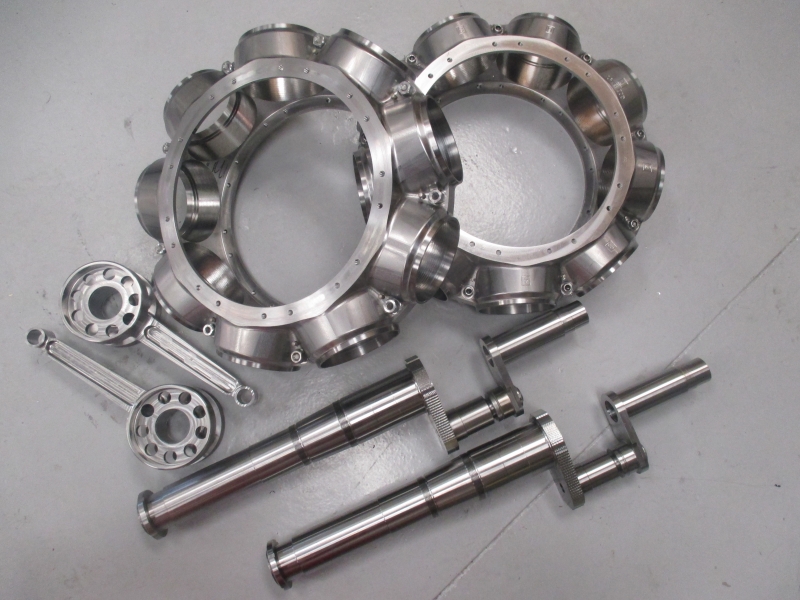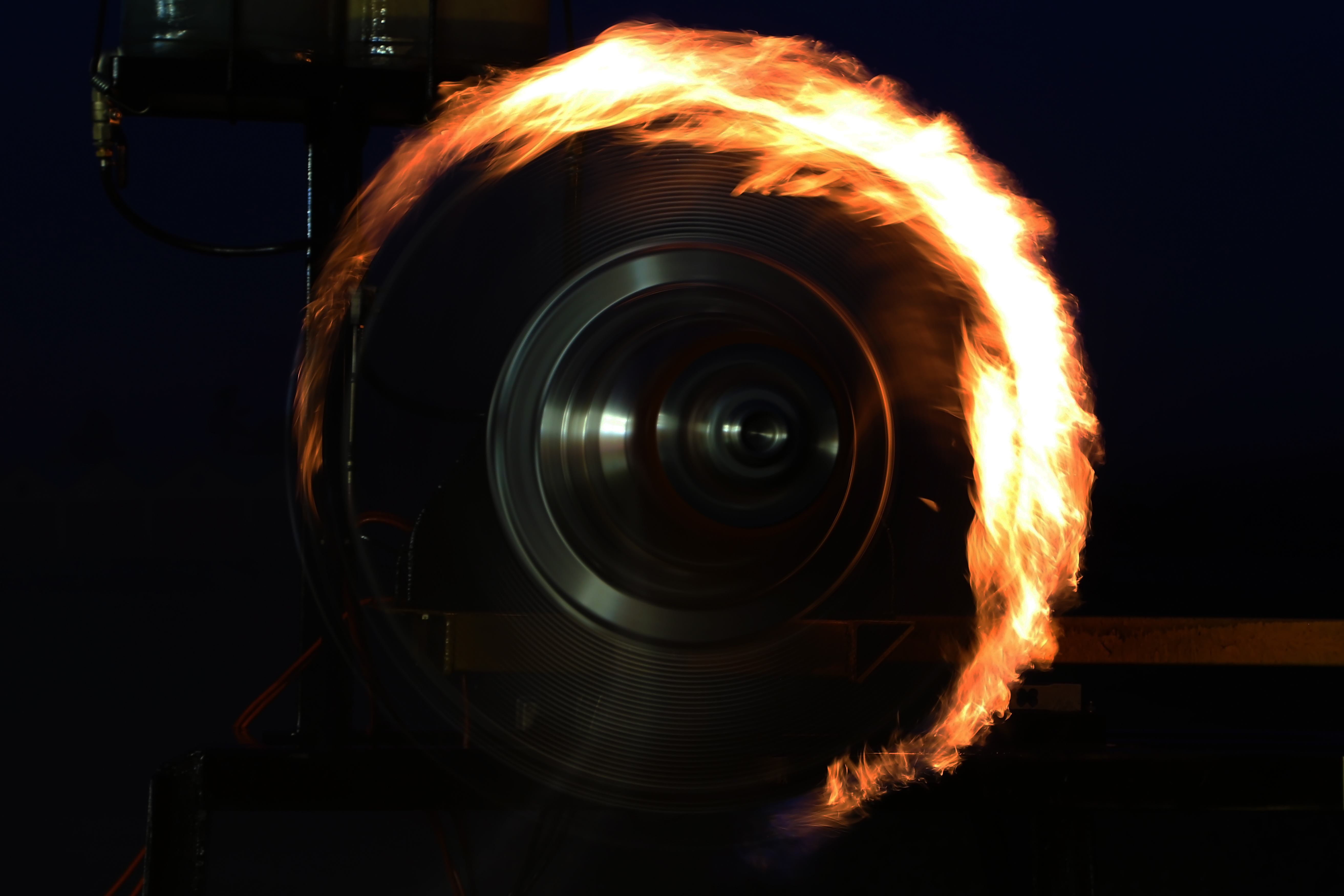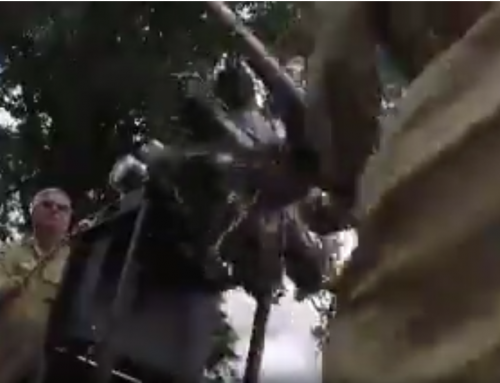We have been reverse engineering and remanufacturing hard or impossible to get aircraft parts for many years. We have previously made Gnome cylinders too and we reverse engineered the RAF-1A V8 motor – so we had no concerns about our technical capabilities. But there’s a difference between making one-offs and a production run. We have achieved our goal of developing techniques to economically manufacture, in particular the cylinders with their intricate finning. We now know that we can also manufacture complete sets of Rhone cylinders and welcome enquiries.
The project has been made economic by the application of modern technology, our ability to design and implement solutions to difficult remanufacturing challenges and our close working relationship with our tool provider ISCAR PACIFIC.
Without our CAD drawing programs and CNC equipment the project would be technically very difficult and impossibly expensive.
Engineering and manufacturing has come a long way in the 100 years since the Gnome engine was originally produced. Both materials and machining methods have changed dramatically. We understand that the original factories were in two parts – one making the engines and the other making the tools to make the engines. The original engines were manufactured by the thousands and that meant that different processes were viable but they were still very expensive to make.
The crankcases were originally forged. Forging is the process where a billet of red hot steel is placed in a specially made forging die and then pressed/stamped out under enormous pressure to produce the shape. Because of the size of the crankcase these dies and presses would have been very large.
Forging was quick and economical at the time…possibly still would still be today if we were producing 1000s of engines. But we are not. Today we need to be able to make these engines in batches of five and so the cost of the tooling and presses to forge these items is completely uneconomic. As a result we start with a solid billet of steel and machine the parts that we need.
To make this project viable and produce engines at an economical price we have had to call on all our resources – not only our machines and expertise but also our cutting tools supplier.
We have for many years been using cutting tools supplied by ISCAR Pacific. They have been able to meet our demanding cutting tool requirements especially when we ask the difficult questions … and when we need to do things out of the norm … which is quite often.
Here is the process so far. We’ll keep updating as the story unfolds.
Broach Manufacture
For the manufacture of the Prop Hub we needed to machine internal splines/keyways in the washer that holds the prop to the hub. To maintain consistency we decided to manufacture a broach to finish the internal keyway. Once it was machined it was heat treated ready for use.
Broaching is a machining process that uses a toothed tool, called a broach, to remove material. Broaching is used when precision machining is required, especially for odd shapes. Broaches are shaped similar to a saw, except the teeth height increases over the length of the tool.
Rocker Arms
The original arms were cast steel but we opted to machine them from 4140 round stock. Roughing of the small pocket in each arm was done with an Iscar high feed mill which has a high metal removal rate and made short work of this task.
Cam followers
Nothing particularly special about the manufacture of these items. There is a lot of work in them however. It’s only when you look closely that you can see the oil grooves in the ends of the cam follower tubes to allow oil which is pushed out by the centrifugal force due to the rotation of the engine. The oil flows into the two grooves in each side of the fork on the end of the cam follower tubes. It then flows through the hole and matches a hole in the roller pin which then flows to the centre of the roller.
We used the Iscar cam drill to hollow out the cam follower tubes.
Slave Rods
Slave rods were manufactured from 4340 round bar. The Iscar high feed mill with its high material removal rates made short work of transforming round stock into flat bar to finish into conrods.
Master Rod
The next major components to be manufactured were the master rod and crankshafts. Manufacturing the master rod required a lot of machining as we had to produce it from round stock. Photo shows the finished master rod.
Valve Sets
Having completed all the large parts we have now moved on to lots of detailed work. We have already completed the cams and mounting bosses.
The valve sets were manufactured from billet similar to other parts but they had their own special challenges. There is a large radiused undercut that flows from under the valve seat. We had to make our own tooling to be able to machine this as there is nothing available off the shelf.
Once the seat undercut was sorted, a holding fixture was made and then the remaining machining was done using this fixture.
Crankshaft
In NZ the range of steel sock that we have access to is much more limited than in many other parts of the world. As a result we have to adopt special machining techniques to compensate. We have machined both the short and long crankshafts from 4340 round stock as there is no flat stock available here. Can you see a crankshaft hiding inside this billet?
We decided that milling would be the most efficient to way to rough most of the material prior to turning. The ISCAR FWX-05 high feed mill did an efficient job of removing the bulk of the material in preparation for turning.
The master rod was roughed out with both the high feed mill and also the 25 dia 10 mm button cutter.
Next step after the cylinders was to make the front and rear sections of the engine, the rear cover at the back and the cam case at the front. While the originals would have been forged then machined, we have machined both parts from solid steel billets.
Crankcase
The crankcases are machined from a solid billet of steel – lots and lots of metal to be removed. We use both a feed mill and button cutters to rough 90% of the crankcase.
When it came to boring the crankcase for the cylinders we needed to undercut one of the diameters. We looked at several options but decided on using a Multimaster Tee slot cutter and used the CNC to interpolate. We were very pleased with the end result.
Cylinders
Getting a hole in the cylinder efficiently was paramount and the Korea Technics drill did a good job of this.
Cylinders were roughed on the outside and the fins were also rough machined. Some things we need to keep in-house… so sorry – no photos of how we go about finishing the fins.
Tooling for this project is Sponsored by
Iscar Pacific – Engineering Meets Art









